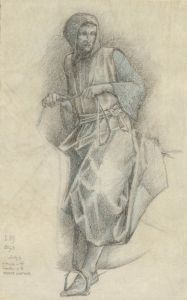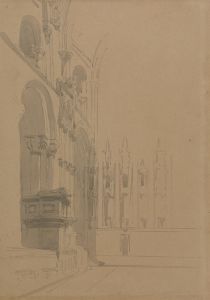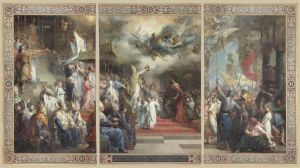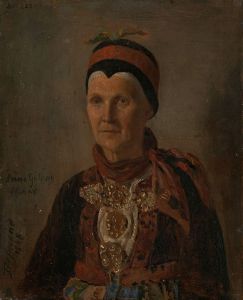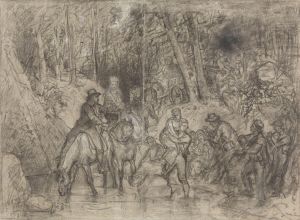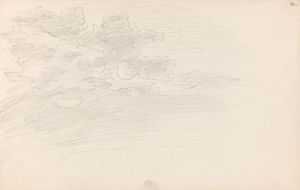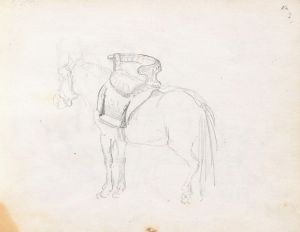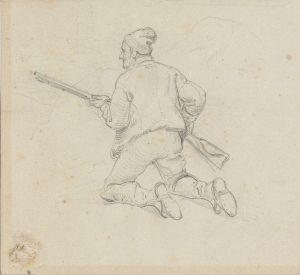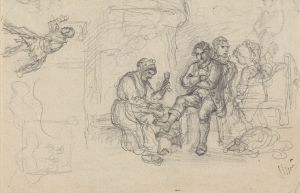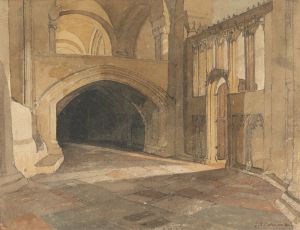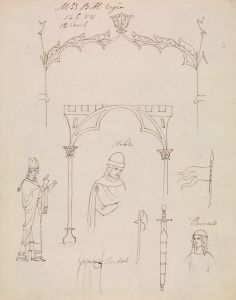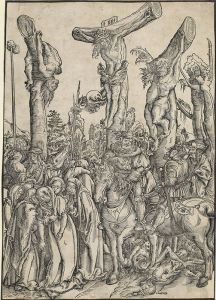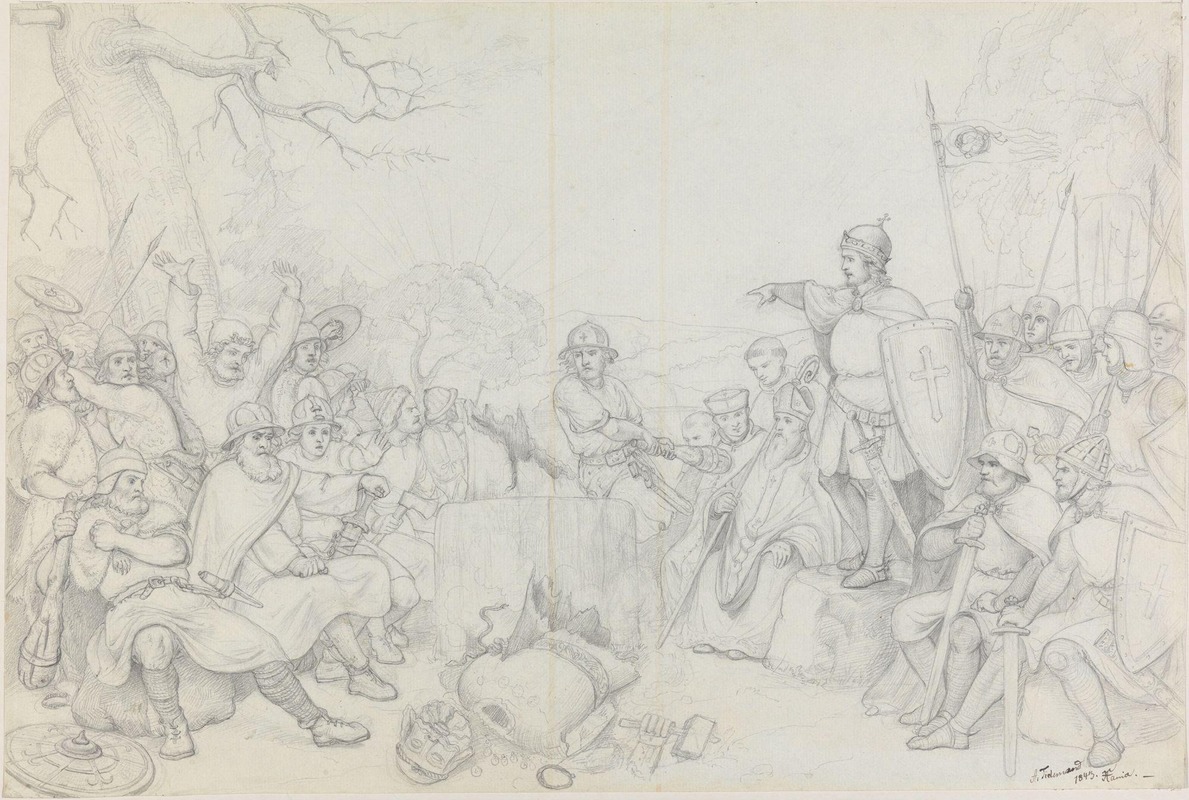
Olav den hellige omstyrter Torsbildet på Hundorp
A hand-painted replica of Adolph Tidemand’s masterpiece Olav den hellige omstyrter Torsbildet på Hundorp, meticulously crafted by professional artists to capture the true essence of the original. Each piece is created with museum-quality canvas and rare mineral pigments, carefully painted by experienced artists with delicate brushstrokes and rich, layered colors to perfectly recreate the texture of the original artwork. Unlike machine-printed reproductions, this hand-painted version brings the painting to life, infused with the artist’s emotions and skill in every stroke. Whether for personal collection or home decoration, it instantly elevates the artistic atmosphere of any space.
Adolph Tidemand's painting Olav den hellige omstyrter Torsbildet på Hundorp (translated as Saint Olaf Topples Thor's Statue at Hundorp) is a notable work of Norwegian art that depicts a significant moment in the Christianization of Norway. Created by Tidemand, one of Norway's most prominent 19th-century Romantic painters, the artwork reflects his interest in historical and national themes, which were central to his oeuvre.
The painting illustrates a legendary event associated with King Olaf II of Norway, later canonized as Saint Olaf. According to historical and saga traditions, Olaf played a crucial role in the conversion of Norway to Christianity during the early 11th century. The scene portrayed in the painting is based on accounts from medieval sources, such as Heimskringla by Snorri Sturluson, which describe Olaf's efforts to dismantle pagan practices and symbols, including the destruction of statues dedicated to Norse gods.
The specific event depicted in the painting is said to have taken place at Hundorp, a site in the Gudbrandsdalen valley in Norway. Hundorp was historically significant as the seat of Dale-Gudbrand, a local chieftain. According to the sagas, Olaf confronted Dale-Gudbrand and his followers, who worshipped the Norse god Thor. In a dramatic act symbolizing the triumph of Christianity over paganism, Olaf is said to have destroyed a statue of Thor, leading to the conversion of the local population.
Tidemand's painting captures this moment with dramatic intensity, characteristic of Romanticism's emphasis on emotion and grandeur. The composition likely includes key elements such as the figure of Olaf, the shattered statue of Thor, and the reactions of the onlookers, though specific details of the artwork's visual elements are not widely documented. Tidemand's work reflects the 19th-century interest in national identity and history, aligning with the broader Romantic movement in Europe, which often sought inspiration from medieval and folkloric themes.
While the painting is rooted in historical and legendary narratives, it is important to note that the sagas, including the accounts of Olaf's actions at Hundorp, blend historical events with mythological and literary embellishments. As such, the painting should be understood as an artistic interpretation rather than a strictly factual depiction of historical events.
Adolph Tidemand's contributions to Norwegian art and his focus on national history have made works like Olav den hellige omstyrter Torsbildet på Hundorp enduring symbols of Norway's cultural heritage. The painting remains an important example of how art can engage with and interpret historical and legendary themes.






